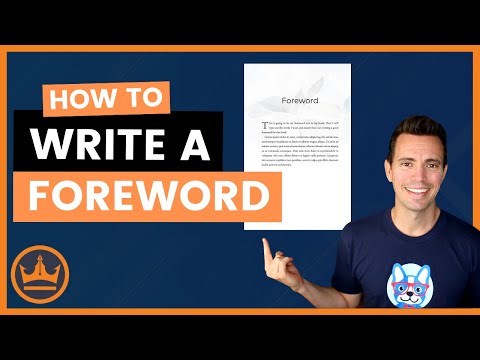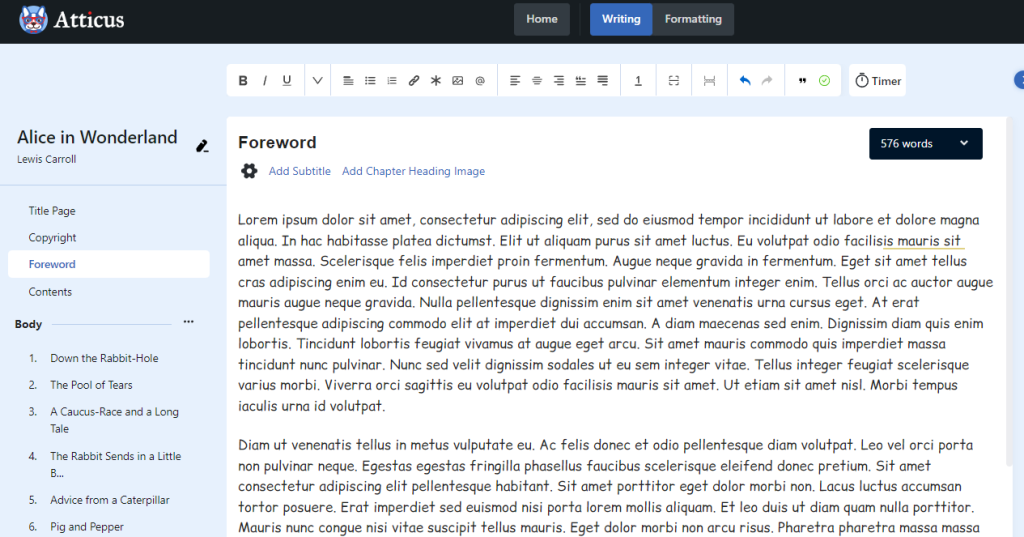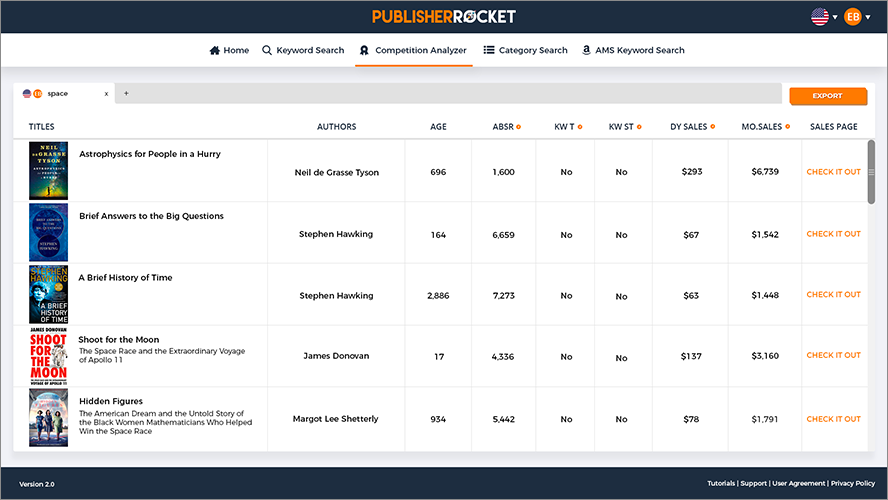If you've been asked to write a foreword, don’t panic.
You're not writing the book — you're introducing it. And done well, your foreword can boost the author’s credibility and connect readers to the story ahead.
This guide will show you what to say, how to structure it, and what separates a forgettable foreword from one that adds real value.
This post is part of a series that discusses the different parts of a book and how they all help each other to create the perfect book. Check out our Master Guide.
- What exactly is a foreword
- Great ideas for writing one
- The basic parts of a foreword
- A detailed breakdown of how to write a foreword for a book
- What the major benefits are for writing a foreword
Table of contents
And although a foreword is one of the shortest parts of a book, that doesn't mean it's not important. Let's talk about everything you need to know on how to write a foreword for a book.
What is a Foreword?
A foreword (often misspelled as “forward”) is a short introduction to a book — written by someone other than the author.
It’s a personal message to the reader, often from a peer, mentor, or expert in the author’s field. Think of it as an endorsement with a story behind it.
You'll probably want to elect a close friend or colleague to write this for you. And if you've been chosen to write a foreword for some else's book… take it as a compliment!
This is where you should discuss the book, the author, and how you're connected to it all. In short…you're getting people excited for what's coming.
Video: How to Write a Foreword
For a nice summary of this article, along with a few of my own personal thoughts on the subject, be sure to check out this video on how to write and format a foreword.

Want more videos like this? Be sure to subscribe to my YouTube channel for weekly videos!
Ideas on How to Write A Foreword for a Book
So what should you write about when tasked to write a foreword?
Not sure what to include? Use these topic prompts to shape your foreword and give it both personality and purpose.
1. Talk about your personal relationship with the author.
Share how you met the author and how you know them. This can actually be a bigger deal than you think. By doing this, you help show the author as likeable and relatable.
2. Discuss how the author has helped people like the readers (including you).
This is particularly useful if the author has helped with something that is going to be discussed in the book. These are great for self-help books or non-fiction, but can also be used for fiction. For example, if the author writes about a detective overcoming alcohol addiction through group therapy AND has been a tireless advocate for helping people overcome addiction in real life…That would be an amazing foreword.
3. Signify why the author is qualified to write this book.
If the author is writing a book on psychology (or a psychological thriller), mentioning that they are a Psych professor shows just why you want to read this book. Readers will definitely appreciate hearing that the author knows their stuff.
4. Talk about your involvement in the book.
You may actually have helped out with the book. Whether as a resource or research assistant, it would be an awesome read to get deeper insight into the author's creative process.
The 4 Basic Parts to a Foreword and How to Write Them
A great foreword is short, structured, and sincere.
Most fall between 750 and 1,200 words — just enough space to connect with the reader and tee up the book ahead. Here's a simple structure to guide you.
The Beginning
Starting out with a great introduction provides the base for your writing. Here you want to introduce yourself and how you know the author. Provide your credentials as well. What are you known for? There may be times where you don't personally know the author, but you're the best person for their foreword. Simply explain the importance of what the author is writing. This should only be a few sentences, and done properly that's all you'll need.
The Middle
This section is the real meat of your foreword. It's where you convey your primary message, whether from one of the prompts above or otherwise.
The End
Your conclusion should not only wrap up your personal writing, but get readers excited to start the book.
Your Name
Finally, it's time to sign your name. Be sure to list any and all relevant titles you may have. When appropriate, this is also a wonderful place to give your own book a shout out (“author of…”).
Pro Tip: Before you write a book foreword, it's a good idea to read several of them. And the good news is, they're easy to find. Pull a few favorite books off your shelf, or check out the examples we have below, looking for some that are similar to the book you're writing a foreword for. See what other writers did, noticing which ones get you most excited for the book ahead.
How to Format a Foreword
Formatting a foreword is similar to formatting a regular chapter — but with a few subtle differences worth noting:
- The foreword uses less ornamentation such as larger first letters.
- The first paragraph is usually not indented.
- The title is usually just “Foreword” — no need to get fancy
- You can add a subtitle (e.g., “Foreword by John Smith”) if desired
- Page numbers use roman numerals, since this section appears in the front matter
If you are formatting in a program like Microsoft Word, and already have your trim size, margins, gutter margins, font licenses (be sure you have the commercial license for all fonts, as Microsoft Word only gives you the license for personal use on most fonts), then formatting the foreword should be relatively simple. Just make sure it has minimal ornamentation compared to the chapter pages, and gets the page numbers right.
Thankfully, a program like Atticus will help to do this for you.
Atticus automatically handles trim size, margins, and page numbering — and ensures your foreword matches the rest of your book’s professional design.
And you won't have to worry about any lawsuits from the fonts you use, which might get you into trouble if you're using your own fonts with MS Word.

Created in Atticus.io
Benefits to the Author for Having a Foreword
A thoughtful foreword can boost the author’s credibility and position the book as worth reading.
It’s a form of social proof — especially valuable when the foreword writer is respected in the same field or genre.
This leads to the next major benefit for authors.
Your foreword can be a great marketing and selling tool for the author — particularly if you are an expert in the applicable field (in fiction, this would usually just mean another author in the genre). By leveraging your reputation, the author can piggy back on your credentials and sell more books.
Examples of a Forewords
Curious how others structure their forewords? Here are a few notable examples to study and learn from.
Here are a few important forewords written for well-known books.



What Comes After the Foreword?
The page right after the foreword is the preface or introduction, if you have one.
Side note: “preface” and “introduction” are often used interchangeably. There is a distinction, but generally speaking they serve the same purpose to introduce readers to what they are about to read. They are both also, usually, written by the author.
Here's the most common formatting order for the front matter of a book:
- Title Page
- Copyright Page
- Table of Contents (i.e. chapter headings)
- Dedication Page
- Acknowledgments
- Foreword
- Preface
- Epigraph
You don’t need every piece of front matter — but most nonfiction books include a foreword, preface, or introduction. Choose the elements that best serve your reader and your book’s tone.
Pro Tip: If you're unsure what order to put your front matter in, Atticus has you covered. By default, the program automatically puts each part of a book in the correct order, so you don't have to worry about getting your foreword where your copyright page should be.
How to Ensure an eReader Doesn't Skip Your Foreword
Ever opened an eBook and found yourself dumped straight into Chapter 1? That’s because many eReaders automatically skip past the front matter — including your foreword.
But if you want readers to see your foreword first, there’s a fix.
Instead, Amazon and other retailers estimate where the book starts, and in some cases this can lead to a reader starting with chapter 1 and completely missing your foreword!
So, assuming your foreword has vital information you want to convey, you need a way for readers to start there, instead of on chapter 1.
Thankfully, Atticus is the only formatting program that lets you do this.
All you have to do is go to the Book Details and scroll down until you find the section labelled Start Page.

From there, you simply select where you would like readers to start when they open your book for the first time.
This inserts a special code into the eBook file that lets Amazon know exactly where to open the book for new readers. Simple as that!
Atticus is the currently the only formatting software that lets you customize the Start Page of your book, and not only that, but it also works on virtually every platform, and it's over $100 cheaper than the competition (which does not have this Start Page feature).
How to Write a Foreword for a Book Summed Up
If you've been given the privilege to write a book foreword, take it as great honor. The author obviously trusts you, your credentials, and your writing. By following these simple steps, you can put together an amazing foreword the author is sure to love.
Above all, be honest and be yourself.
You're not the book’s author — you're its champion.
Keep the tone aligned with the book, but bring your own voice to the page.







